Galleries
Pace Gallery Positions Itself as the Art Business of the Future. But Employees Say an Abusive Work Environment Keeps It Mired in the Past
Employees say that years of missteps have led to a workplace culture described as “toxic.”
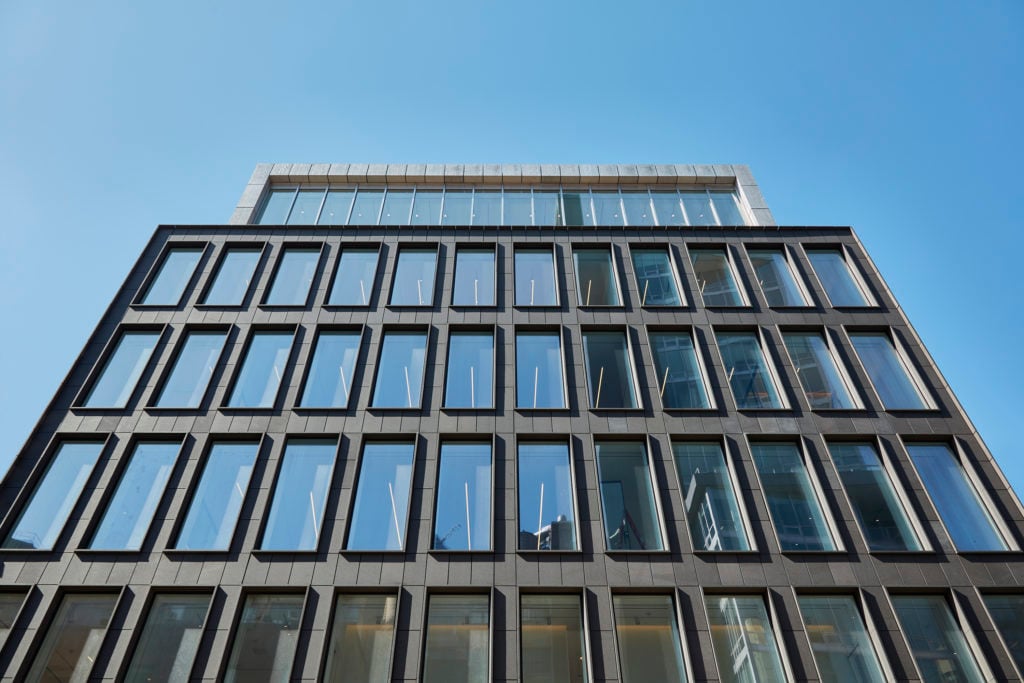
Employees say that years of missteps have led to a workplace culture described as “toxic.”

Marc Glimcher was missing the zeitgeist.
Late last winter, the Pace Gallery CEO had contracted the novel coronavirus alongside his wife and young son. The family recovered from the disease, but Glimcher was still recuperating from its aftereffects when the economic realities of COVID-19 started to hit the arts sector. The gallery expected a precipitous drop in sales; nearly 50 of about 200 employees were furloughed, about 40 percent of whom were later terminated. But there were also investments: the dealer followed collectors to East Hampton where he christened a new outpost and threw his weight behind a new business, a costly experiential art center in Miami called Superblue.
However, the gallery had another problem by June. George Floyd’s death at the hands of Minneapolis police triggered a national reassessment of racial injustice, filtering into the art world’s ouroboros. The problem was particularly acute in the commercial gallery world, an overwhelmingly white industry where BIPOC workers are often relegated to low-ranking positions.
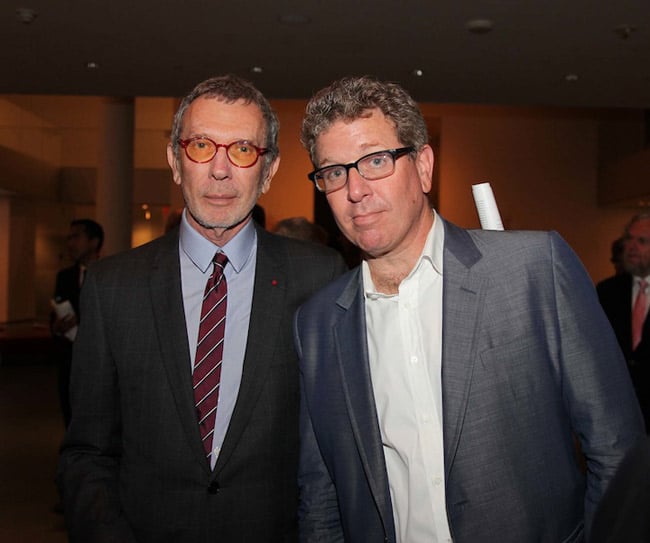
Arne and Marc Glimcher. Photo courtesy Pace Gallery.
As some dealerships created new opportunities for Black employees or established committees to handle diversity issues, Glimcher initially looked inside his family for advice: he hired his own 28-year-old, Lilleth Glimcher, to facilitate the gallery’s diversity initiatives. Before long, Pace brought on additional team members to steer what a spokesperson has described as a comprehensive review of its workplace culture. But the optics of the appointment were not received well by some.
“When I first heard the news, I thought it was bullshit,” said one current employee, who requested anonymity for fear of retaliation. “People are really upset. How are you going to fix your problems by bringing in a family member?”
Pace Gallery is a family business in the midst of great change. But the delicate transition of power between father and son has lasted for nearly a decade, leading to a remarkable split between the idealistic persona of Marc Glimcher—as the forward-thinking, futurist son intent on creating a new version of a 21st century gallery—and the old-school business savvy of his paterfamilias, Arne Glimcher, who built Pace into one of the most influential galleries of the 20th century and helped supercharge the careers of such artists as Agnes Martin and Jean Dubuffet.
Differences between their two management styles have created a continuity problem, according to some employees, who say that the gallery’s longtime combative workplace culture contradicts the present-day dealership’s veneer of progressive politics.
Artnet News spoke with nearly 20 current and former staff members at Pace to better understand how family dynamics have shaped the gallery’s internal hierarchy and how it is positioning itself for the future. Employees described an environment of manufactured chaos where they often felt mistreated and manipulated. Their accounts were corroborated by emails, recordings, and coworkers who witnessed the alleged misconduct firsthand. The majority of these allegations focused on the conduct of company presidents Douglas Baxter and Susan Dunne. Both executives have decades of tenure at Pace, and reputations as two of the world’s most influential dealers.
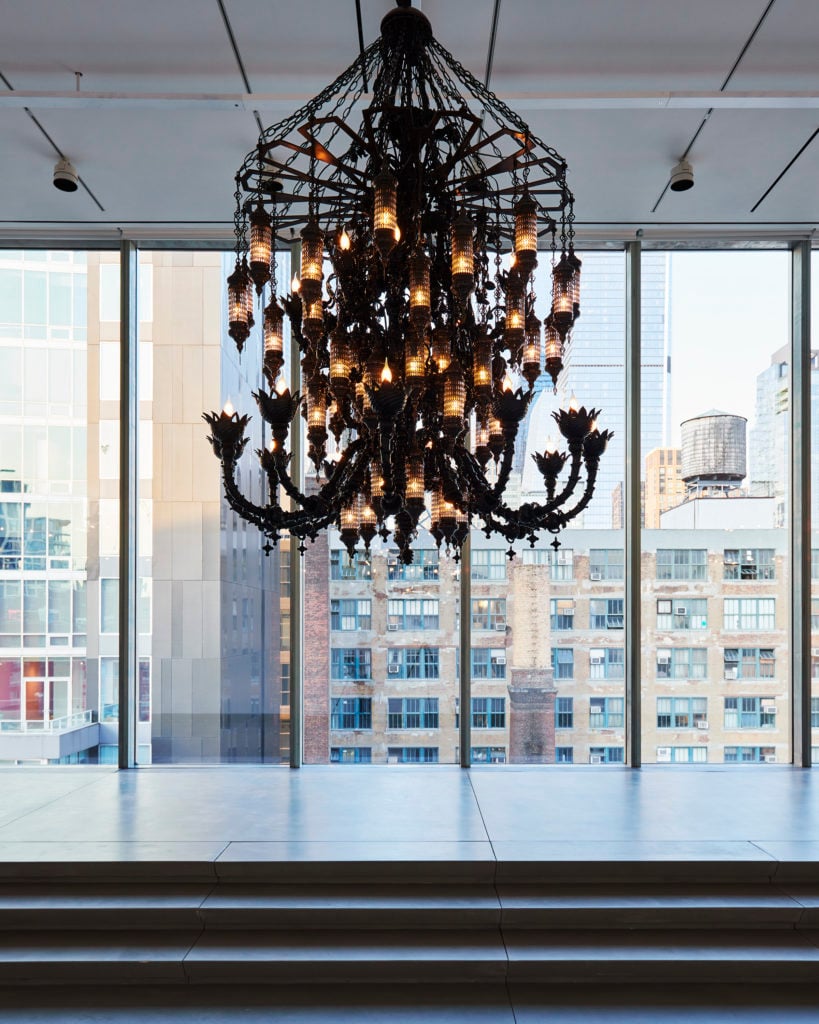
Installation view “Fred Wilson: Chandeliers” at Pace, 524 West 25th Street. Photo: Guy Ben-Ari, courtesy of Pace Gallery.
From these conversations, an image emerged of a gallery struggling with high turnover and low diversity, where alleged misconduct by veteran executives, including accounts of physical and verbal abuse, often did not lead to action or discipline. Many employees wondered if accountability would ever be possible from inside the family, which has operated the gallery for more than 60 years.
Douglas Baxter, Susan Dunne, and the Glimchers declined to be interviewed for this story. Through a spokesperson, the gallery issued the following a statement: “We have had our share of workplace issues in the past and have worked to address them as they have been brought to our attention. The specific accusations being raised here refer to conduct that is unacceptable. We take these allegations very seriously and will bring them to the attention of our independent consultant and HR department to be investigated as part of our ongoing work. This behavior does not reflect our values and that is why we are implementing structural change and accountability measures to ensure it does not occur in the future.”
Some staff viewed Pace’s problems as representative of how much of the upper echelon of the art market operates. Pressure on blue-chip galleries to reform their business practices has substantially increased in recent months as social media accounts like @cancelartgalleries provide a platform for disgruntled employees to share their stories anonymously. And the Glimchers’ is not the only gallery in the midst of a handover to a new generation that has different ideas about how business should be done. Other Pace employees, however, argued that what they experienced on the job surpassed industry norms.
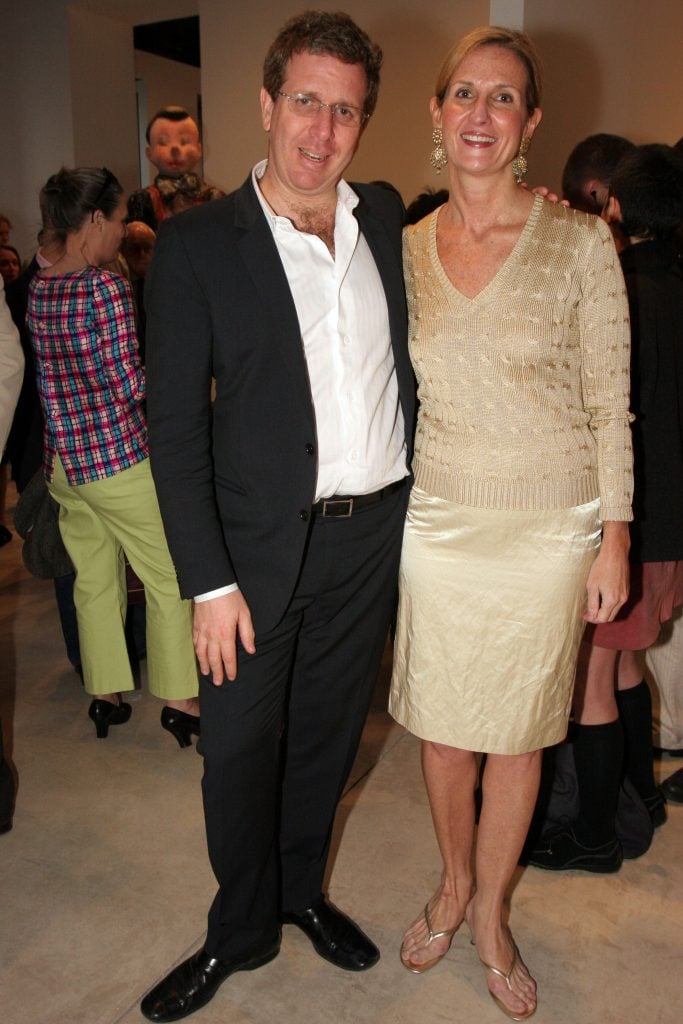
Marc Glimcher and Susan Dunne attend Jim Dine’s opening at PaceWildenstein on May 4, 2007 in New York City. (Photo by Will Ragozzino/Patrick McMullan via Getty Images)
One art handler recalled his manager asking him in 2018 to create an automated sprinkler system that would spray homeless people sleeping outside the gallery on 25th Street. Less than a year later, the same manager tasked him with vacuuming backed-up sewage from a pipe underneath a dealer’s office.
Eight current and former employees described the sales office as “toxic.”
“My desk was in between Douglas and Susan,” said a former sales assistant who asked to remain anonymous. “Every day would include a barrage of shouting from them.” Five employees said that colleagues had warned them against taking assistant positions with the presidents.
But there were considerable draws to the opportunity, too. It offered a chance to work alongside the dealers who helped shape Pace into an industry leader by working directly with world-famous artists like David Hockney, Fred Wilson, and Maya Lin.
“It was a Devil Wears Prada situation,” said Laura Marin Soto, a former assistant to Dunne. “If you got her a soy sauce packet from the kitchen, she would ask how long it was there. Her lunch had to be plated. Susan was high maintenance.”
Failing to measure up had consequences, according to Soto. “You always had the sense that you were expendable,” she said. “My hands would sometimes shake thinking that Susan was coming into the office.”
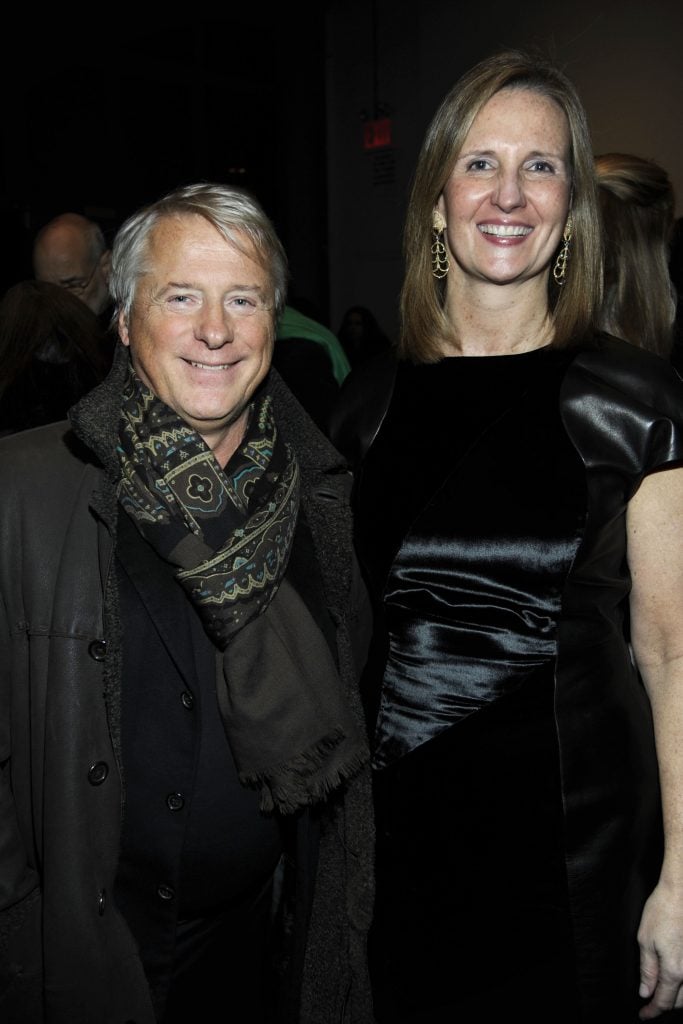
Douglas Baxter and Susan Dunne at the afterparty for “Sterling Ruby 2Traps” at the Standard in New York City in February 2009. (Photo by JOE SCHILDHORN/Patrick McMullan via Getty Images)
The majority of employees interviewed also said that Baxter’s temper cast a shadow over the office. According to eight employees, the Pace president was known for throwing tantrums. Nearly two decades ago, an employee said, they witnessed Baxter throw a phone out the gallery window along with several papers and files. Former sales assistants claimed that, in 2014, Baxter hurled a catalogue at one staff member’s head. The woman left the gallery soon after the alleged abuse. Pace requested that Baxter take anger management training, sources said. Afterwards, he also began working from home more frequently.
All the same, according to three former assistants, Baxter’s alleged misconduct continued.
“It was constant abuse,” said Joseph de Leon, who assisted the president through 2019. “My family are Spanish-Portuguese Jews who settled in Jamaica. He would question my background, asking if all the Jews there were rich.”
“He was constantly yelling at his assistants, telling us that we had mental disabilities or that we were retarded,” De Leon added.
Emailing the antiques dealer Angus Wilkie in 2018, Baxter wrote, “I find I need the country. Even if it’s full of not always such wonderful people as is the case with the Hampsteins,” referring to the New York vacation spot by combining the Hamptons with a common suffix for Jewish surnames, “stein.”
Another former assistant, who asked to remain anonymous for fear of retaliation, said that Baxter fired him in 2017 during the Art Basel Miami Beach fair after an exclusive restaurant lost the dealer’s last-minute reservation. A week later, the gallery asked him to return to work, but Baxter, the assistant said, refused to speak to him. “My responsibilities went to zero.”
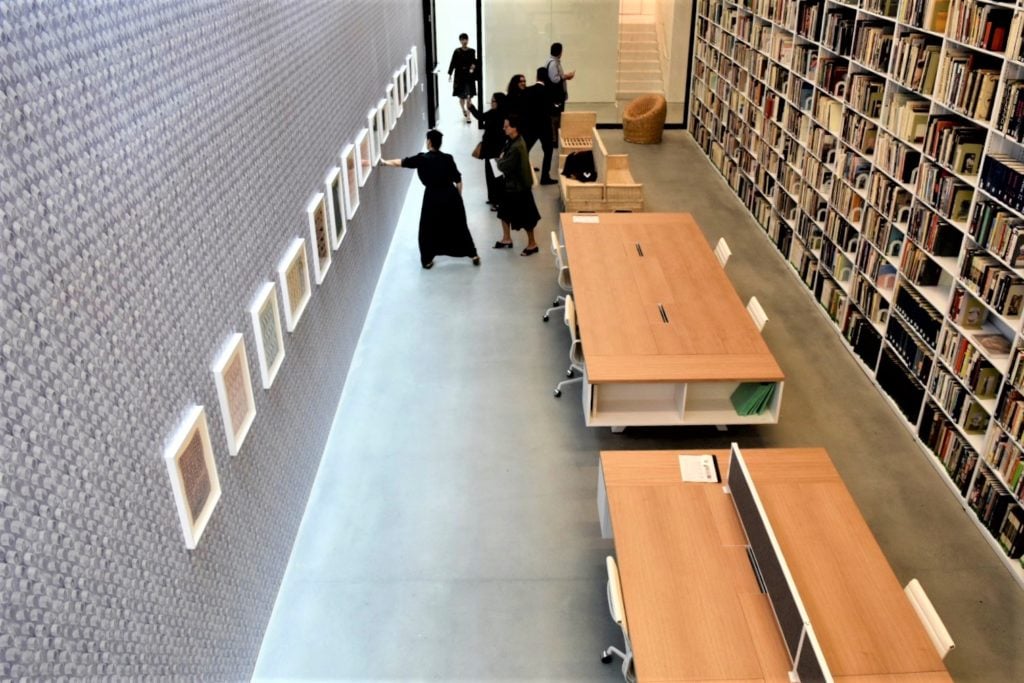
The research library at the new Pace gallery, with works by Yto Barrada (at left). Photo by Ben Davis.
The outbursts sometimes spilled outside the gallery.
“I am asking you to find another company who is willing to accept his behavior,” a general manager at a luxury car service wrote to Pace after Baxter allegedly cursed at the company’s driver multiple times, according to documentation reviewed by Artnet News.
“The driver called and spoke no English,” Baxter emailed Uber after a ride. “We are in the United States. English is the language here!”
Employees claimed that the gallery’s owners were aware of the alleged misconduct by Baxter and Dunne. At least three employees told Artnet News that they brought their complaints directly to Marc and Arne Glimcher. Those who asked human resources for help claimed that their requests were rarely met with sympathy.
“Douglas Baxter is around because he is just as responsible for Pace being the powerhouse it is today as anyone else,” said a former executive at the gallery. “He exercises true loyalty.”
Employees also raised questions about some of Baxter’s business tactics, saying that he sometimes set prices based on the nationality of a collector. “Let’s bump up prices by 50 on each,” the Pace president emailed his assistants in 2017, referring to artworks by Richard Pousette-Dart, whose work has sold for as much as $2.6 million at auction. “I think the client is Chinese.”
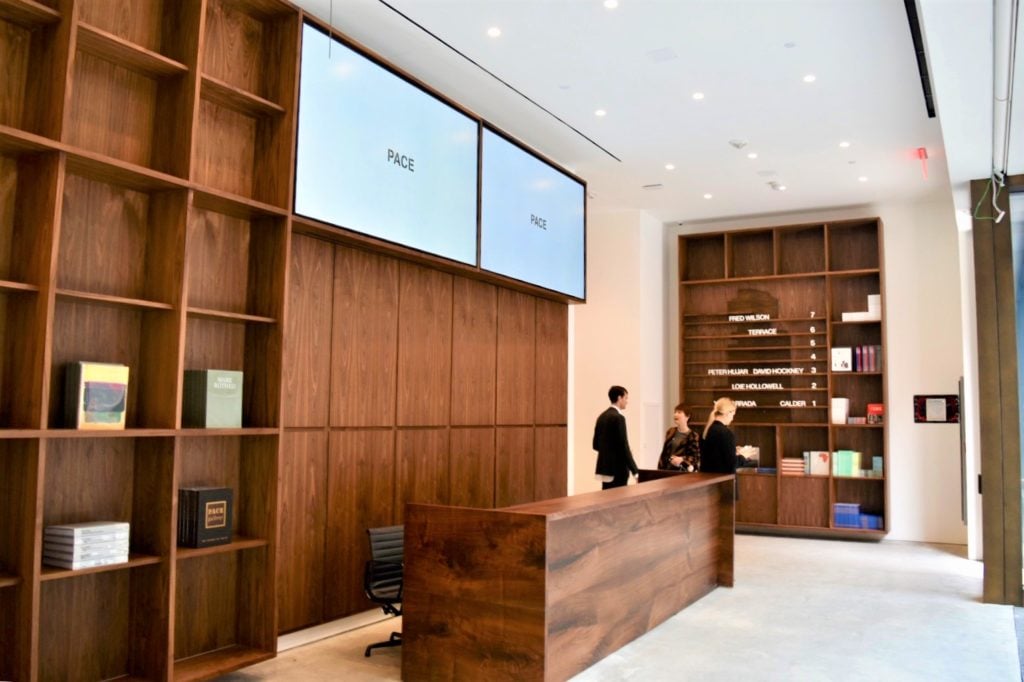
The front desk at the new Pace Gallery.
Pace Gallery declined to comment on specific allegations raised against Dunne and Baxter. A representative said the gallery had received one formal complaint against an executive, “which was investigated in accordance with Pace’s complaints policy.” She declined to share further details, but stated that the HR department is “preparing to implement additional channels for employee feedback.” The spokesperson also noted that, in early 2019, Pace expanded its HR department to “include expertise in mediation and conflict resolution” with the aim to improve workplace culture.
Over the summer, Pace formed a culture and equity group with two dedicated staff members within the human resources division. Additionally, the gallery hired two outside consultants: Dina Bailey, an expert in organizational transformation who is reviewing Pace’s workplace culture and policies, and Matthew Kincaid, founder of the organization Overcoming Racism, who is leading a series of anti-racism workshops for all staff.
“Over the last six months we have taken accountability, deepened our understanding, and committed to the changes that need to be made to foster a safe and supportive environment,” the Pace spokesperson said.
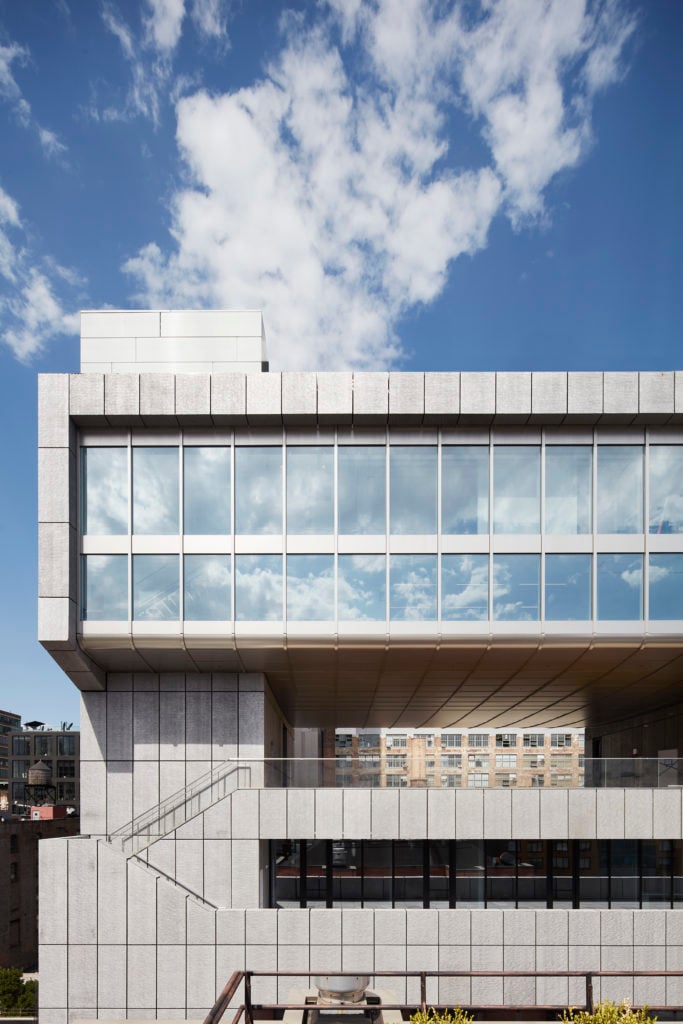
Pace Gallery at 540 West 25th Street, New York. Photography by Thomas Loof. Courtesy Pace Gallery
The gallery’s new culture and equity coordinator, Jumoke McDuffie-Thurmond, who joined Pace as a gallery assistant after graduating from Wesleyan in 2019 and started the role in August, is steering the review of office culture. Part of this work, he said, would involve reviewing the gallery’s past responses to workplace allegations. The review’s initial phase is due to be complete in February. Lilleth Glimcher is the other member of the two person team, who, as cultural engagement associate, will serve as a facilitator of the audit.
“Since June, Pace has been undertaking an extensive assessment of the ways in which it upholds structural inequity and discrimination,” McDuffie-Thurmond said. “I believe that Pace Gallery seriously understands the necessity of centering equity within their workplace environment and is invested in creating structures of accountability that prioritize the safety and wellbeing of their staff and community.”
Although Pace had previously stated that it would search for a director of diversity, equity, and inclusion to join the company—a role not typically seen at blue-chip galleries—it is unclear if that role will still be filled. “External consultants we are working with are helping us determine the best structure for the department,” the spokesperson said.
Well before this summer of reckoning, some employees had hoped that Marc Glimcher’s leadership would increase accountability for his father’s two top lieutenants. But despite a new generation taking the reins over the past decade, some workers say they were disappointed to see that Baxter and Dunne have remained central to the gallery’s operations. Lilleth Glimcher’s arrival reinforced their perception that family and loyalty remain prized above much else.
Lilleth is an artist who helped found the YAH World collective, a theatermaking group that has also produced fundraisers to combat racism and homophobia, according to its website. While it was unclear to some employees how Glimcher’s credentials would make them qualified for leading a corporate inquiry into diversity, equity, and inclusion, those who attended Glimcher’s initial address to employees in July found the artist to be receptive to criticism.
“I fully acknowledge that nepotism is the backbone of the art world,” Glimcher, who is being paid for their involvement, wrote employees in an email. “As a white privileged grandchild of the founders and child of the CEO, I am only here as a facilitator in these early stages because of the work I’ve been doing with my community, and because I have a unique dynamic with my family, have been talking to them about these issues for many years, and can hold them accountable in a particular way.”
Pace employs roughly 100 people across its New York locations, but several workers told Artnet News that fewer than a dozen staffers identified as Black; most people of color work in the gallery’s art-handling and facilities management divisions. A spokeswoman for Pace said that it did not have demographic information available.
In a statement through the gallery, Lilleth said: “I am not here to take space, I am here to help create space, and to hold my family accountable for long-lasting, radical change that centers the needs of the BIPOC staff, artists, and audiences.”
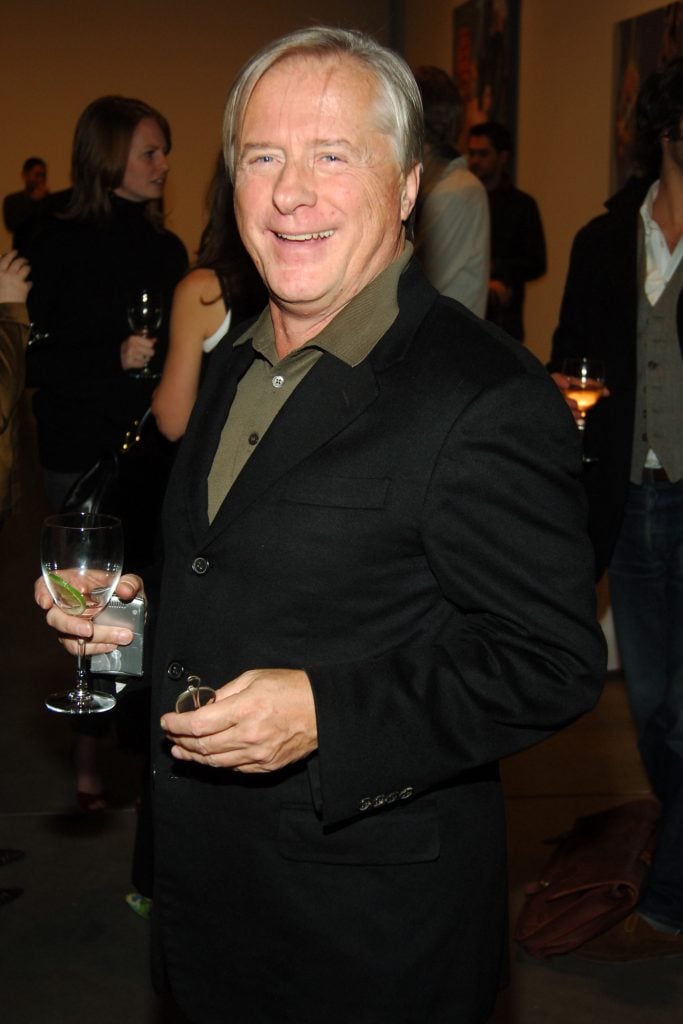
Douglas Baxter in November 2006 in New York City. (Photo by Joe Schildhorn/Patrick McMullan via Getty Images)
In December 2017, Baxter found himself doing damage control for one of Pace Gallery’s most famous artists. That month, HuffPost published allegations of sexual misconduct against the artist Chuck Close, followed by additional reports in the New York Times and Hyperallergic.
Baxter dismissed the allegations against the artist during a private call with Terrie Sultan, then the director of the Parrish Art Museum in Water Mill, New York. In particular, the Pace president criticized one woman who alleged that Chuck Close had sexually harassed her when she was a graduate student at the Yale School of Art.
“Maybe this young woman should go live in Puerto Rico and be a hurricane victim, or starve in Haiti or Ethiopia, or be a bomb victim in Aleppo,” he said in a recording reviewed by Artnet News. “Clearly she is some privileged girl. She went to fucking Yale, and I’m going to feel sorry for her?”
Sultan agreed, saying, “She certainly has not helped herself and her career, that’s for sure.”
The museum director then asked Baxter if Close’s ex-wife, the artist Sienna Shields, could be behind the allegations.
“Arne has the same suspicion,” Baxter responded, referring to Pace’s founder.
Asked about the conversation, Sultan distanced herself from Baxter’s remarks. “I do not, and did not, agree with Douglas’s comments,” she told Artnet News. “I strongly support women who come forward in these circumstances, and I was trying to move what became an uncomfortable private conversation with a friend to a different topic by commenting on the unfortunate fact that women who come forward often face reprisals.”
Speaking with Artnet News, Shields denied that she was involved in any of the reported allegations of sexual misconduct against Close; however, she said that she felt threatened and harassed by Arne Glimcher for years to stay silent about her own experience with the famous artist.
“Pace had fair warning. I was raising the alarm in 2015,” Shields said. “Arne knew that Chuck was crossing the line. He knew what was up and how devastating the situation was.”
According to Shields, the gallery’s efforts to discredit the allegations against Close were symbolic of a larger inability—or unwillingness—to evolve in the face of a changing world. In a 2015 email sent to Shields as she was in the process of divorcing Close, Arne Glimcher thanked her for insight into the artist but clarified his position. “Please be assured that as long as I am alive I will look after Chuck and after that Marc will.”